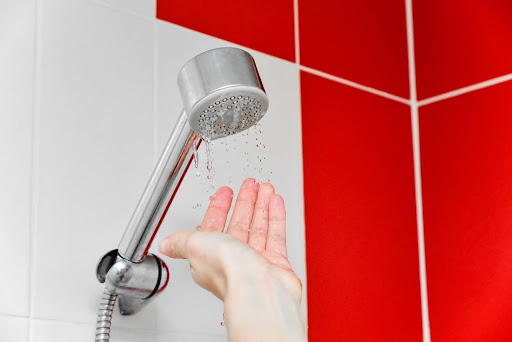Have you ever turned on your kitchen faucet, anticipating a strong stream of water to fill your glass or pot, only to be met with a disappointing trickle? This is a common problem experienced by homeowners, and it can turn everyday tasks into major chores. However, it’s important to know that low water pressure in your home can be more than just a minor annoyance — it can affect everything from your daily routine to the efficiency of your washing machine.
Understanding the causes of low water pressure in your home is the first step toward finding a solution. In this blog, we’ll explore the top ten reasons for low water pressure so that you can get to the bottom of the problem as quickly as possible.
Understanding Low Water Pressure
Before diving into the causes, it’s essential to grasp what causes low water pressure in the first place. Essentially, it’s a reduction in the water flow from your plumbing fixtures. This can be due to a variety of issues within your plumbing system or even external factors related to your municipal water supply. The impact can range from minor inconveniences, like taking longer to fill a pot with water, to significant disruptions in daily tasks, such as showering and washing dishes.
Top Reasons for Low Water Pressure
When you notice low water pressure in your home, it may seem inconsequential at first glance. However, it warrants immediate attention for several reasons. Addressing the root cause can lead to cost savings, safeguard your plumbing infrastructure, and guarantee efficient water usage. To effectively fix low water pressure, it’s imperative to first identify its underlying causes.
1. Clogged Pipes and Fixtures
One of the most likely causes of low water pressure in your home is clogged pipes or fixtures. Over time, mineral buildup clogs pipes, reducing the water flow to your faucets and showers. Similarly, fixtures like shower heads and sink aerators can become clogged with mineral deposits, restricting water flow.
2. Corroded Plumbing
Corroded pipes are some of the most common reasons for low water pressure. Older homes with galvanized steel pipes are particularly susceptible to corrosion, which can narrow the path for water flow, leading to low water pressure. If your plumbing is several decades old, corrosion could be the culprit.
3. Issues With the Municipal Water Supply
Sometimes, the problem lies not within your home but with the municipal water supply. A large pressure drop can occur if there’s a break in the main city supply pipe or if the water company is conducting maintenance.
4. Faulty Pressure Regulator
A water pressure regulator helps maintain consistent pressure in your home’s water supply. If this device fails (known as a broken pressure regulator), it can lead to a noticeable low water pressure across all your plumbing fixtures.
5. Partially Closed Valves
Your home’s water pressure could be affected by a partially closed main shutoff valve or water meter valve. These valves should be fully open to allow optimal water flow. Making sure these valves are fully open requires a simple check, yet it is an often-overlooked maintenance step. Homeowners might not consider these valves as potential culprits of low water pressure and may instead focus on more complex plumbing issues.
6. Water Leaks
Leaks in your plumbing system can divert water away from where it’s needed, leading to lower pressure. Even a small leak can have a significant impact on your home’s water pressure. The source of leaks can vary widely, from deteriorating pipe joints and corrosion to damage inflicted during home renovations. The insidious nature of these leaks means they can go undetected for a long time, silently undermining your plumbing system’s integrity and efficiency.
7. High Demand on Water Supply
One of the most surprising reasons for low water pressure is high demand on your water supply. Believe it or not, peak water usage times can lead to low water pressure. When multiple homes are drawing from the same municipal water supply simultaneously, the increased water demand can reduce the pressure in your home.
8. Outdated Fixtures
Old, inefficient plumbing fixtures not only use more water but can also contribute to lower water pressure. Modern fixtures are designed to maximize water flow and pressure efficiently. The benefits of upgrading to modern plumbing fixtures extend beyond the immediate perception of better water flow. Over time, the savings in water usage can translate into noticeable reductions in your water bills, making the investment in modern fixtures financially beneficial as well.
9. Plumbing System Design
The design of your plumbing system, including the diameter of your pipes and the length of the path water must travel, can influence water pressure. Homes with complex, extensive plumbing systems may experience lower pressure.
10. Sediment Buildup in the Water Heater
For homes experiencing low water pressure with hot water specifically, sediment buildup in the water heater tank could be the issue. This buildup can restrict water flow, affecting the pressure at which hot water exits your fixtures.
Contact the Plumbers at Same Day Plumbing Today!
Low water pressure can be a frustrating problem to deal with, but identifying the underlying causes is key to finding a solution. By addressing issues such as faulty pressure regulators, mineral buildup, or corroded plumbing fixtures, you can improve water flow and restore adequate pressure in your home.
If you’re experiencing persistent low water pressure, don’t hesitate to contact Same Day Plumbing. Our qualified plumbers are ready to lend their assistance. Whether you need leak detection services or a toilet replacement in Toronto, we’re here to help.
\Are you facing an urgent plumbing issue? There’s no need to worry. Our emergency plumbers in Toronto can tackle any significant problems you might encounter. Remember, a steady flow of water is essential for daily tasks and overall comfort in your home. Now that you’re familiar with the potential causes of low water pressure in your home, reach out to us. Schedule your service appointment today!


